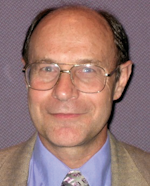My jaw dropped and I broke into a cold sweat as I stared in shock and disbelief. When I finally regained the power of speech, I stammered to the young process engineer beside me, “Why do you do THAT!”
She looked a little startled, but then shrugged her shoulders and said, “That’s the way we have always done it. It was built that way.”
Reviewing process flow diagrams (PFDs) isn’t usually such an exciting exercise, but this was an exception. The drawing showed a distillation column — one of the largest in a very big chemical complex — with a steam reboiler. It was impressive, but not particularly unusual. What astonished me was the fin fan cooler on the feed stream. Why on earth…
Distillation is a separation process that uses heat to drive successive stages of vaporization, mixing and condensation. The heat for this process comes from the reboiler. However, if the feed entering the column is subcooled, which was true in this case, the reboiler must provide additional heat to raise the feed to its bubble point before it can start vaporizing. Cooling the feed stream ahead of the column increases the load to the reboiler. In the vast majority of cases, this is a bad idea; it increases energy costs. The exceptions are generally where the cost of condensing the overheads dominates, as in some low-temperature distillation systems; however, that didn’t apply in this case.
After that mind-numbing lightbulb moment, I had several intense conversations with operations managers and technical specialists on the site, while the young process engineer ran multiple simulations of the column. After several weeks, we were able to persuade the plant manager to turn off the fan on the cooler. Steam demand for the reboiler promptly dropped by more than 30%, saving the plant $1,000,000/year, without any investment.
Even with the fan off, natural convection in the fin fan cooler still caused significant heat loss. We proposed a small project to eliminate that loss by installing a bypass around the cooler. This would save an additional $200,000/year with a very good payback. However, due to other priorities, the project wasn’t implemented.
I have presented this example many times [1], and a number of people have proposed reasons why the designers included the feed cooler. A leading possibility is that they anticipated higher feed temperatures that would cause additional vapor traffic in the rectifying section of the column and overload the overhead condenser. If so, adding the feed cooler at the design stage would avoid installing a larger overhead condenser, and perhaps also increasing the diameter of the rectifying section — but at the cost of significantly higher energy consumption.
My best guess is that the designers expected occasional upset conditions that would require removing heat from feed, and the feed cooler was intended only for occasional use to handle these situations. However, after the plant was commissioned, it became standard practice to run the fans continually. After all, the equipment was there; why not run it? So, it ran, wasting energy for more than a decade, until we happened upon it in a PFD review.
Operating practices tend to become entrenched over time. Operators may dutifully follow procedures that were developed when their plant was commissioned, even when throughput, feed stocks, product slates, and a host of other factors have changed. Also, they sometimes make changes as a result of short-term problems. For example, running the feed cooler to deal with an abnormally high feed temperature, or bypassing pumparound coolers during cold weather and forgetting to revert when conditions change. As a result, many valves are closed when they should be open, or open when they should be closed; many pieces of equipment are in use when they should be off or vice versa; and many process set points are chosen without proper consideration of their impact on energy utilization. I have encountered lots of these situations over the years, and perhaps you have, too. If you’d like to share some examples, I’d be happy to hear from you.
REFERENCE
1. Rossiter, A. P., “Back to the Basics,” Hydrocarbon Engineering, Vol. 12, No. 9, pp. 69–73 (September 2007).



